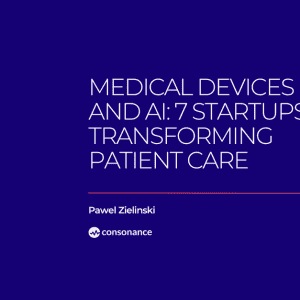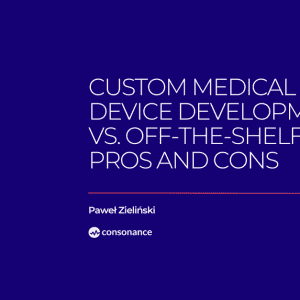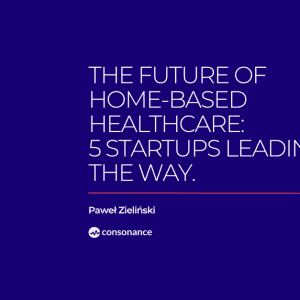MDR Medical Regulatory: Essentials for Innovators

The MedTech industry is evolving rapidly, but no innovation can reach the market without meeting the necessary medical regulatory requirements. Understanding these rules is not just a legal obligation, it’s the foundation of patient safety and product credibility. In today’s article, I will focus on the medical regulatory essentials under the MDR in the European Union.
Why Medical Regulatory Matters for MedTech Innovators?
At first glance, they may seem like nothing more than hundreds of pages filled with complex documents and tedious requirements. To make matters more confusing, different regions of the world have different regulatory systems for medical devices. This can be especially overwhelming during the creative process, when the primary focus is on developing innovative features in the lab. However, understanding the regulatory essentials is key, they ensure patient safety and product efficacy from the very beginning.
Without proper regulatory approval, a medical device cannot be marketed in most regions. In the European Union, for instance, CE marking is required under the Medical Device Regulation (MDR). From an investor’s perspective, regulatory compliance is also crucial. It demonstrates the team’s professionalism and deep understanding of quality required for further commercialization . In fact, regulations provide a structured framework which, although it may seem complicated at first, ultimately simplifies the development process by offering clear guidance and answers to most questions. Physicians and healthcare professionals also rely on regulatory approval as a sign of quality and reliability. This trust further underlines why regulatory compliance is essential. If you want your product to succeed, you must comply with the regulations in the region where you intend to sell it.
Your Path to Market approval
Successfully launching a medical device under the MDR begins with a solid understanding of regulatory fundamentals. The journey to market follows a structured process that outlines each necessary step to ensure the product reaches end users safely and in compliance with the law.
Here are the key steps you need to follow to successfully complete the process:
- Determine whether your product qualifies as a medical device according to the MDR definition.
- Identify the classification of the device, this is essential for selecting the appropriate conformity assessment procedure and understanding documentation requirements.
- Analyze relevant standards and applicable legislation.
- Implement a quality management system in accordance with ISO 13485.
- Conduct a clinical evaluation or performance evaluation (depending on the device type).
- Prepare complete technical documentation.
- Carry out testing in accredited laboratories.
- Issue a Declaration of Conformity.
The process culminates in an audit conducted by a notified body. Only after successfully passing this audit can the product be affixed with the CE (Conformité Européenne) mark and introduced to the market.
It’s important to note that the certification path can vary. If your product features innovative elements but there are already similar reference devices on the market, the process may proceed more quickly. However, if your product is entirely novel with no existing equivalent, a more complex and time-consuming route should be expected. Each stage of the process plays a vital role, so it’s wise to understand them early on. Doing so will help ensure that your journey to commercialization is as smooth and efficient as possible.

Medical device success begins with a solid understanding of regulatory fundamentals.
Is Your Product a Medical Device?
You may be wondering why you should actually classify your product as a medical device, since this involves numerous obligations and the need to meet strict regulations. However, it is worth remembering that such a qualification brings many benefits.
First of all, you open the door to the medical market, gaining the opportunity to offer your product to hospitals, clinics or doctors’ offices. Think about it: have you ever seen a doctor using a device that does not have medical device status? Would they risk their image of a professional clinician?
Putting your product in this category also increases your credibility in the eyes of your customers. It’s a sign that your product has passed rigorous testing and meets all safety and quality requirements. And btw. – It helps immensely with marketing and sales (you can tell that this particular piece of electronics is a medical device and so you can apply for reimbursement or sell your medical product with a higher price tag.
When a Product Is a Medical Device?
As defined in MDR Regulation (EU) 2017/745:
“Medical device” means any instrument, apparatus, appliance, software, implant, reagent, material or other article intended by the manufacturer to be used, alone or in combination, for human beings for one or more of the following specific medical purposes:
- Diagnosis, prevention, monitoring, prediction, prognosis, treatment or alleviation of disease.
- Diagnosis, monitoring, treatment, alleviation of, or compensation for, an injury or disability.
- Investigation, replacement or modification of the anatomy or of a physiological or pathological process or state.
- Providing information by means of in vitro examination of specimens derived from the human body, including organ, blood and tissue donations.
And which does not achieve its principal intended action by pharmacological, immunological or metabolic means, in or on the human body, but which may be assisted in its function by such means.
The following products shall also be deemed to be medical devices:
- devices for the control or support of conception.
- products specifically intended for the cleaning, disinfection or sterilisation of devices as referred to in Article 1(4) and of those referred to in the first paragraph of this point.”
Understand the Medical Device Classification
One of the most fundamental regulatory essentials is determining the classification of a medical device, as this directly reflects the level of risk associated with its use. The classification not only informs the requirements for conformity assessment but also shapes the conditions for placing the device on the market and for post-market surveillance. As such, this step is critical. The higher the risk class, the more detailed and comprehensive the technical documentation must be.
Under the MDR regulation, medical devices are classified into four risk groups, according to the classifications rules:
- Class I – e.g., orthopedic collars.
- Class IIa – e.g., hearing aids.)
- Class IIb – e.g., CT scanners.
- Class III – e.g., pacemakers.
Additionally, Class I is further divided into subclasses:
- Class Is – devices that require sterilization (e.g., certain surgical instruments).
- Class Im – devices with a measuring function (e.g., graduated measuring cups).
When classifying a medical device, several factors are considered, including:
- The degree of invasiveness.
- The duration and type of patient contact.
- Source of energy.
- The presence of any potentially hazardous components.

Quality Management System (QMS) compliant with ISO 13485, covers all stages of the product lifecycle.
Build with Compliance in Mind
From the very beginning of the medical device development process, applicable regulations and standards must be taken into account. The legal foundation for medical devices in the European Union is Regulation (EU) 2017/745 (MDR).The use of harmonized standards is not mandatory, but it significantly facilitates demonstrating conformity with the MDR requirements. One of the key obligations for manufacturers is to assign each device a Unique Device Identifier (UDI), which enhances traceability and transparency throughout the supply chain. Moreover, comprehensive and up-to-date technical documentation must be maintained for each device. To support this, it is strongly recommended to implement a Quality Management System (QMS) compliant with ISO 13485, which covers all stages of the product lifecycle and ensures process control and adequate documentation.
Risk management is another critical component required under the MDR. It should be implemented throughout the entire lifecycle of the device. ISO 14971 provides a well-established framework for identifying, evaluating, controlling, and monitoring risks, both during development and post-market.
What Happens After a Launch
It may seem that once a medical device is placed on the market, the manufacturer no longer has any obligations, but that’s not the case. Under the EU’s medical regulatory , manufacturers are required to conduct post-market surveillance (PMS). This involves actively collecting and analyzing data on the performance of the device under real-world conditions.
Manufacturers are also obligated to report serious incidents to the relevant national competent authority and, depending on the system’s functionality, to the EUDAMED database. Based on the collected data, they must update the technical documentation, clinical evaluation, risk analysis, and implement appropriate corrective and preventive actions.
In addition, manufacturers must have procedures in place for handling complaints and implementing corrective actions. Therefore, the manufacturer’s responsibilities do not end with placing the product on the market. The MDR places strong emphasis on ensuring user safety throughout the entire product life cycle. Even after launch, the regulatory essentials continue to play a critical role in ensuring safety, compliance, and continuous improvement.
Lost in MedTech Regulations? You’re Not Alone
Are you working on an innovative medical device but aren’t sure what to do next? Feeling lost in the maze of medical regulations and procedures? You’re not alone and you don’t have to navigate it by yourself.
At Consonance, we support medical device innovators at every stage, from concept to market launch. Together, we’ll guide your solution through the regulatory pathway and ensure every detail is taken care of.
👉 Let’s talk. Whether you’re exploring an idea or already building a prototype, we can help guide the next step.
Contact us now!
Sources:
https://www.ema.europa.eu/en/human-regulatory-overview/medical-deviceshttps://eur-lex.europa.eu/eli/reg/2017/745/oj/eng
https://eur-lex.europa.eu/eli/reg/2017/745/oj/eng
https://www.fda.gov/medical-devices/overview-device-regulation/classify-your-medical-device
https://decomplix.com/medical-device-classification-eu-mdr/#what-is-medical-device-classification-what-classes-exist-under-the-eu-mdr
https://www.pfsz.org/regulacja-mdr-medical-devices-regulation/
https://simplerqms.com/post-market-surveillance/






